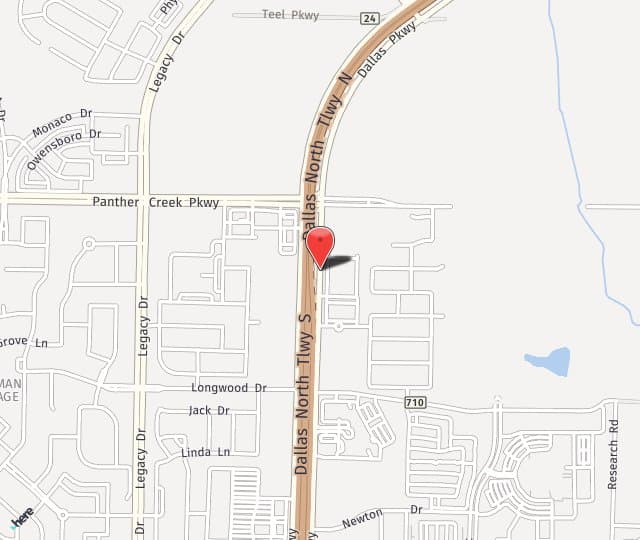Breast revision surgery Frisco, Texas
Breast revision is a procedure performed after an initial breast procedure to correct an unsatisfactory result as a direct result of previous surgery. Often this is because the initial surgeon did not perform the procedure correctly. In such cases, the unfavorable results are immediately seen after the first procedure. Sometimes it is the result of late internal scarring or continuing breast changes after surgery that is independent of the surgeon who performed the procedure. In such patients, there was an initial good cosmetic outcome that has over time given way to an unaesthetic appearance. The exact details of the breast revision procedure vary significantly from patient to patient and are dependent upon the nature of the complication and the patient’s reason for having the surgery.

Common breast implant related problems:
Breast implants are not lifetime devices, and breast revision surgery can become necessary if the implant structure is compromised or if any of the following problems happen:
- Capsular Contracture: all patients with implants develop a thin layer of scar tissue called a capsule that lines the tissues that come into contact with the implant. However in some patients (for reasons that are not fully understood) this capsule/scar tissue forms a tight and constrictive band around the breast implant, giving the breasts an overly firm, round appearance or causing the breasts to feel hard, tender, or painful. This is the most common implant-related complication and can be corrected during breast revision surgery with a capsulectomy (release) or capsulotomy (removal) of the scar tissue.
- Implant Placement Problems: The results of breast augmentation surgery depend on making the space for the implant in an appropriate fashion beneath the breast. If the space is overly large then the implants can displace in one of multiple directions depending on the area beneath the breast that was over dissected:
- Sideways into the armpit area when the person is lying down
- Fall beneath the breast fold (the fold that marks the junction of the lower part of the breast with the upper abdomen) into the abdomen giving a double bubble appearance ( implant partially above the breast fold forming the first bubble and partially below which is the second bubble)
- Overshoot the inner boundary of the breast and fuse/merge with the other breast forming a unibreast. This is called symmastia (also called uniboob or kissing implants)
- Bottoming out: occurs when the implant shifts downward on the chest, gradually lowering and or stretching the natural breast fold
- High-riding implants: implants that sit too high up on the chest. Usually from inappropriate release of the muscle during the initial breast augmentation surgery.
- Implant wrinkling or rippling: the development of unsightly wrinkles or ripples on the breast mound overlying the implant. All implants have creases/wrinkles and typically these are not seen as the implant is covered by a good volume of breast tissue. However, in patients with thinned out breast tissue these wrinkles are readily seen.
- Continued breast changes: In many patients who had breast augmentation before pregnancy and childbirth, the breasts continue to age and change with these life events. Although the implants may be intact without scar tissue formation, the breasts can become overly saggy with excess skin and the nipples drop down in position.
- Implant deflation or rupture: many scientific studies estimate the risk of implant rupture at about 1% each year after the original surgery. After about 15 years this translates to a 15% chance of implant rupture.
- Changes in breast aesthetics and implant perception: With time, the patient may feel that the initial implant was either too big or too small. With recent emphasis on breast implant associated lymphoma, many women are removing textured implants and replacing them with smooth implants. Other women had saline implants placed approximately between 1992 and 2006 (when gel implants were taken off the market and not available for implantation) and wish to replace these with gel implants.
The following are common revision procedures:
Implant Exchange (implant removal and replacement): implants from a prior breast augmentation are removed and replaced with new implants. No other internal work is done. This is typically done in patients who were either too large or too small after the first augmentation and have an overall shapely breast without internal scarring or ptosis (breast droop). This can be done on one or both sides.
Implant Exchange with scar tissue release: In addition to placement of new implants, scar tissue can be released (capsulotomy) or removed (capsulectomy). Performed in patients with distortion of the breast secondary to internal scarring. If the person is happy with the existing breast size, then new implants of the same size are placed after scar tissue release. Larger or smaller implants can also be placed after scar tissue management.
- Implant Removal (with or without a breast lift):Perception of the body can change as one ages and some women do not wish to have implants anymore. Others have had multiple revision procedures to correct scar tissue or other problems and do not wish to have an implant anymore. In these circumstances, both breast implants are completely removed and are not replaced with new implants. Patients can decide to have a breast lift performed at the same time after the implants are removed to address the excess skin and sagging that happens in some women after the implant is removed.
Revision of malpositioned implants: This is the most challenging revision procedure after breast augmentation. The implants can be bottomed out, shifted sideways or form a unibreast. Significant experience and expertise is required to do these procedures and produce a pleasing aesthetic result. Dr. Solomon has performed many such revision procedures and has successfully corrected complications from other surgeons. During the initial consultation, Dr. Solomon will examine you in detail and explain in detail the problem happened and the best surgical procedure/procedures to correct the deformity.
Benefits of Breast Revision Surgery
Breast revision surgery offers numerous benefits to individuals who are dissatisfied with the results of their initial breast augmentation or need corrections due to medical or cosmetic concerns. These benefits include:
- Improved Appearance: Breast revision allows patients to address asymmetry, implant size, or placement issues, ensuring a more balanced and natural look that matches their desired aesthetic.

- Enhanced Comfort: If you experience discomfort due to implant deflation, capsular contracture, or changes in your breast tissue over time, revision surgery can relieve and restore comfort.
- Restored Confidence: Correcting imperfections or addressing dissatisfaction with previous results can significantly boost self-esteem and body confidence.
- Upgraded Implants: Advances in implant technology allow patients to replace older implants with newer options that feel more natural, are safer, or have a longer lifespan.
- Correction of Medical Issues: Breast revision can address complications such as implant rupture, shifting, or capsular contracture, promoting overall health and wellness.
- Tailored to Your Goals: Whether you want to adjust the size, shape, or type of your implants, breast revision surgery is a personalized solution.
How Do I Know If I Need Breast Revision Surgery?
You may need breast revision surgery if:
- Your Appearance Has Changed: Over time, factors like aging, pregnancy, weight fluctuations, or changes in skin elasticity may alter the appearance of your breasts. Revision surgery can restore your original aesthetic or enhance your current look.
- You Are Experiencing Pain or Discomfort: Capsular contracture (the hardened scar tissue around an implant) or implant malposition can cause discomfort, pain, or visible distortion that revision surgery can address.
- You Want to Change Your Implants: Whether considering a different size, shape, or implant type (e.g., switching from saline to silicone), breast revision surgery allows you to achieve your updated preferences.
- You Suspect a Rupture or Deflation: Implant leaks, ruptures, or deflations require surgical intervention to replace or remove the affected implant.
- Asymmetry Is Noticeable: If your breasts have become uneven due to implant shifting or changes in natural breast tissue, breast revision can restore balance and symmetry.
- You Are Dissatisfied with Previous Results: Whether due to surgical technique, healing complications, or changes over time, breast revision can correct aesthetic concerns from a prior augmentation.
Why Choose Solomon Plastic Surgery
At Solomon Plastic Surgery, patients benefit from the expertise of Dr. Matthias Solomon, a Triple Board-Certified Plastic Surgeon with an unparalleled reputation in the Dallas-Fort Worth metroplex. Dr. Solomon is the only surgeon in the area certified in both Plastic Surgery and Facial Plastic Surgery, underscoring his exceptional skill set. Trained at the world-renowned Mayo Clinic, he brings a level of expertise and precision rarely found in cosmetic surgery. His on-site, state-of-the-art surgical center is AAAASF-accredited, ensuring the highest safety and quality standards.
Dr. Solomon’s approach to plastic surgery is shaped not only by his advanced medical training but also by his artistic sensibility. Patients appreciate his compassionate bedside manner, meticulous attention to detail, and dedication to personalized care. Recognized by prestigious awards such as D Magazine Best and Patient’s Choice Award, Dr. Solomon is committed to helping patients achieve their ideal outcome with confidence and satisfaction.
Your Consultation with Dr. Solomon
During your consultation, Dr. Solomon will talk with you about your expectations, whether you are a good candidate for a breast revision, and what to expect during and after surgery. Contact Dr. Solomon’s office today to schedule your consultation.
For More Information Contact Us
For more information on Plastic Surgery and Non-Surgical Medical Spa Procedures and Treatments in Offices in Dallas, Frisco, Sherman, Texas and surrounding areas please contact the offices of Board Certified Plastic Surgeon Dr. Matthias Solomon by clicking here or calling 214-234-0277.
Serving patients in Highland park, University Park, Preston Hollow, McKinney, Prosper, Allen, Southlake, Denton, Irving, Flower mound, Little Elm, Fort Worth, Texas and surrounding areas.

